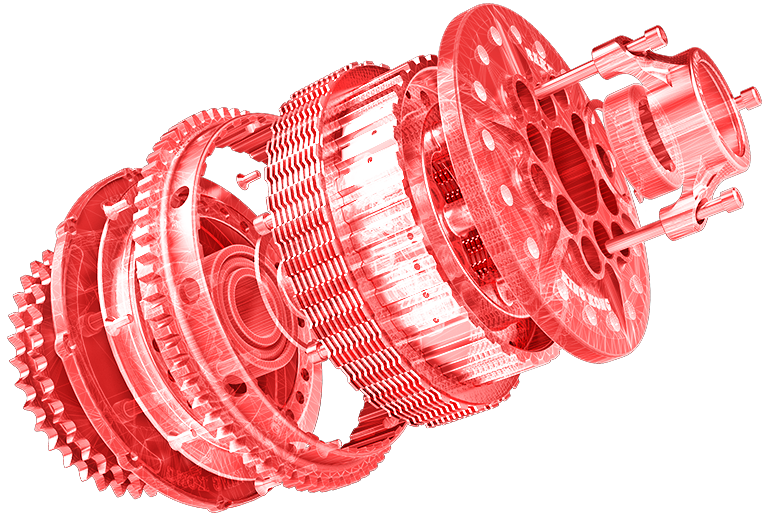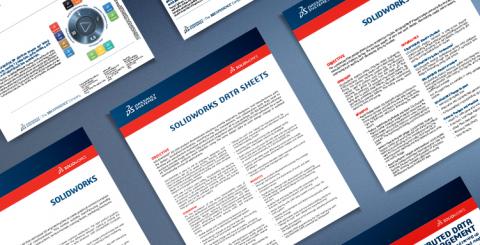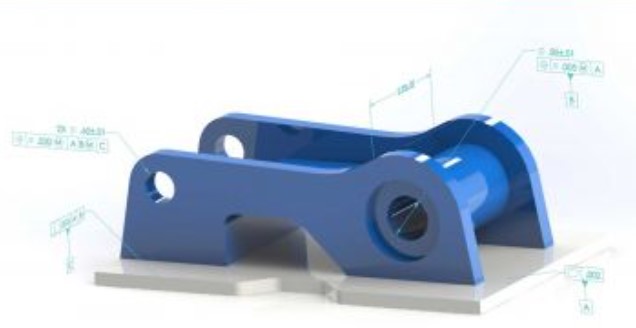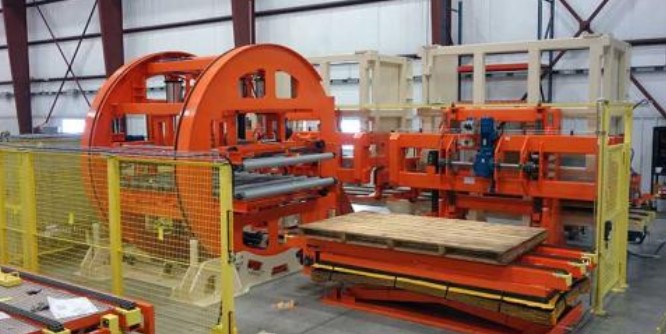SOLIDWORKS® Model-Based Definition (MBD) lets you define and organize 3D dimensions, tolerances, datums, notes, Bills of Material (BOMs), and other annotations; customize publishing templates for manufacturing, such as Part or Assembly Specifications, Request for Quote (RFQ), and Incoming Inspection Reports. You can also publish to widely accepted formats, such as eDrawings®, STEP 242, and 3D PDF for clear 3D communications.
For easier adoptions of the model-based practices, several convenient capabilities have been included in every seat of SOLIDWORKS Standard. With SOLIDWORKS Standard, you can annotate a 3D part or assembly, organize the 3D definitions with annotation views and communicate in eDrawings all directly in 3D.

SOLIDWORKS MBD Features:
SOLIDWORKS MBD helps you define feature-based annotations in Parts and assemblies (DimXpert), and import 3D annotations from common CAD formats for more efficient design.
When the number of 3D annotations becomes too many, you can show and hide annotations automatically as a model rotates, capture comprehensive settings with 3D views similar to visual bookmarks, compare 3D annotation differences between revisions to capture subtle but critical differences, and reuse 3D views in 2D drawings when necessary.
SOLIDWORKS MBD helps you communicate directly in 3D. If you like 3D PDF, the software can customize the templates, control accuracies and PDF sizes, publish BOM tables and notes, attach multiple files upon publishing, create and attach STEP242 files. SOLIDWORKS MBD can also output eDrawings or STEP 242 with software-readable annotations.
Unlike miscommunications in 2D drawings and manufacturing based on dated 2D drawings, SOLIDWORKS MBD facilitates 3D engineering communication with integrated 3D specifications, greater clarity, reduced ambiguity, and a shorter update path.
SOLIDWORKS MBD adds clarity in manufacturing communication with 3D integrated specifications, which can also drive downstream applications automatically, such as CAM and CMM programming. SOLIDWORKS MBD enables 3D annotations beyond geometry-based programming.
SOLIDWORKS MBD defines and organizes intuitive 3D specifications integrated with models, which shortens the learning curve. The output of high-quality STEP 242 and 3D PDF complies with the Long Term Archival and Retrieval (LOTAR) standard.
Learn more about SOLIDWORKS MBD

SOLIDWORKS MBD Datasheet
SOLIDWORKS® Model-Based Definition (MBD) is a model-based application that reduces costs thanks to unambiguous, integrated 3D annotations. Unlike 2D drawings, SOLIDWORKS MBD defines, organizes and publishes annotations directly into the 3D data. This helps automate downstream manufacturing processes such as tolerance analysis, machining and inspections.

First Look: SOLIDWORKS MBD
Get a first look and see how SOLIDWORKS® MBD helps you define, organize, and publish 3D Product Manufacturing Information (“or PMI”) and 3D model data into industry standard file formats.

Improve Quality, Efficiency and Reduce Costs with MBD
SOLIDWORKS® MBD is the first complete, integrated drawingless manufacturing solution, providing the time, cost, and quality benefits of 3D to production. While product developers and design engineers have embraced 3D design, 2D drawings have remained the primary means for communicating product manufacturing information (PMI).

